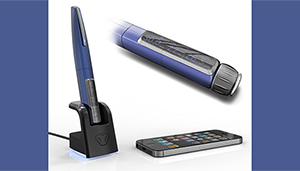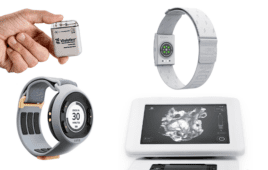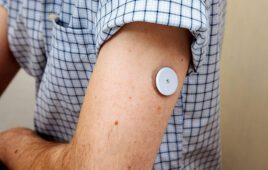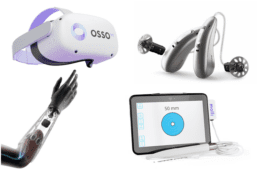Bill Welch, Phillips-Medisize
The estimated number of connected medical devices – devices connected to the Internet –is expected to increase from 10 billion to 50 billion over the next decade, according to the IBM Institute for Business Value.This is due to the ability for machine-to-machine communication through cloud computing and networks of data-gathering sensors, also known as the Internet of Things (IoT) IT market, to add efficiency and cost savings to a wide range of enterprise tasks. It is a market that is anticipated to grow from $8.2 billion to over $12.4 billion by 2018. The impact of this trend on the medical device industry could be significant, as more manufacturers are turning to digital connectivity, or connected health, as a way to improve the coordination and delivery of patient care.
To help ensure your product makes it to market with no – or minimal – delays, keep these 5 things in mind when developing connected medical devices.
1. Development strategy/design consideration
The global delivery of healthcare has become more focused on medical outcomes, achieving results for patients and tying industry incentives to those results. With this paradigm shift, it is no longer sufficient to think about elements of the solution, such as connected services, shortly before market launch. Identify all the ways the device can support the patients and evaluate the system holistically. This ensures end-to-end solutions that are focused on patient outcomes and results.
Medicom Innovation Partner, a Phillips-Medisize company, has developed and applied a complete drug delivery strategy to help companies evaluate opportunities. The approach identifies all the says a device can support patients and lead to improved outcomes with four main aspects: differentiation, market execution, execution constraints, and device technologies.
2. Situation analysis/patient compliance
Many types of medication, for example, must be taken at intervals exactly as prescribed to work effectively. Patients who take such medication, along with their physicians and caretakers, face 2 basic tasks, which can become challenges depending on the variables at play:
- Complying with the dosing schedule
- Maintaining accurate records of dosing events
Consider a patient, instructed to regularly use an inhaler to treat symptoms of emphysema. Failure to comply with the prescribed dosing schedule limits the effectiveness of the treatment plan and can have potentially serious consequences for the patient’s health. If the patient’s physician had an accurate record of the patient’s dosing habits, he or she could use this to emphasize compliance and possibly avoid unnecessary complications or hospitalization.
Despite the advantages of connected devices, the space is still somewhat immature, with far less penetration than the consumer products market. But the potential benefits provided make the path worth pursuing.
3. Connectivity ecosystem
The “connectivity ecosystem” encompasses the device and all the elements used to transmit monitored data. To best serve the specific requirements of the device being developed, it is crucial to know the elements needed and how they should be arranged. Information such as the number of users that will have access to the data, for example, will impact how the connectivity ecosystem is configured.
The ecosystem consists of:
- Delivery device;
- Local connection;
- Wireless link between delivery device and local connection;
- Remote server database;
- Link between the local connection and the remote server database;
- The remote viewers.
4. Wireless subsystem
The wireless subsystem contains all of the elements that enable the device to transmit information wirelessly. In general terms, it includes the device’s microprocessor, the radio that transmits the wireless signal and an interface between the microprocessor and the radio. The Bluetooth Low-Energy (BLE) protocol is ideal for devices because, unlike classic Bluetooth audio streaming, it is tailored for applications where small amounts of data are transmitted at infrequent intervals. BLE also consumes much less power, making it suitable for compact battery-powered devices.
5. Security of the device/information
As the worlds of healthcare and wireless connectivity collide, security of the information transmitted needs to be considered. Although the data being transmitted is typically very low risk, such as dosing schedule, the means of device design to secure data must also be considered. To ensure the safety of patient data, the FDA released a new draft guidance that addresses the steps manufacturers must follow in order to protect medical devices against cyberattacks.
As IoT continues to become an integral part of our everyday lives, the opportunity to use it within device applications remains promising. It is the manufacturers and device designers who must identify, investigate and overcome these challenges so that the implementation of wireless and other related smart technologies can be achieved.
Done successfully, connected systems enable the patient and caregivers to have a 360° view of both the patient and the disease, to not only manage adherence but improve results by understanding the effect of the regimen.
Bill Welch is chief technology officer at Phillips-Medisize.






As patient safety is necessary, also FDA released a new draft regarding this. The article provides great insight about making connected medical device.